|
 |
Public
Buildings
|
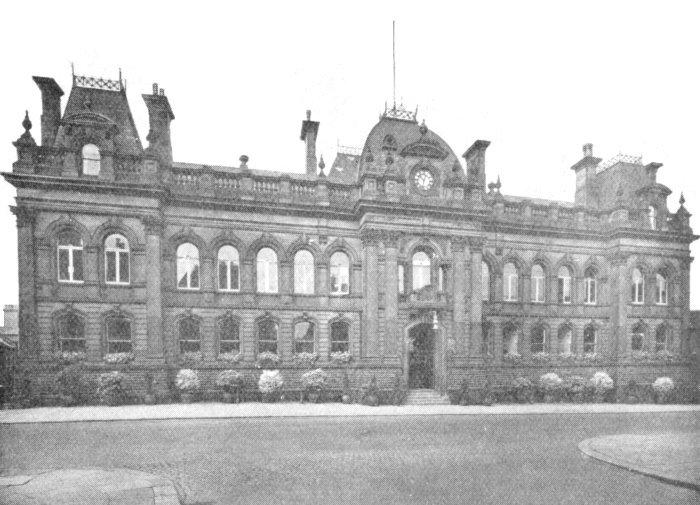
The Town Hall. |
| The Town Hall, erected in North Street
in 1869-70, was enlarged in 1902-3, though
increasing public business has made this
extended accommodation insufficient. It
provides a spacious Council Chamber,
Sessions Court (held in the Prince's Hall),
and the Borough Magistrates' Court, together
with offices for the Town Clerk, Borough
Engineer, Borough Treasurer and Rates
Department, Water Engineer, Chief Constable,
Medical Officer of Health and the Valuation
Officer. In addition, provision is made for
the Recorder, the Magistrates' Clerk, and
witnesses. There are also two Committee
Rooms, Members' Room, Mayor’s Parlour, and a
large vestibule. The Police and Fire Station
are attached, and underneath the Town Hall
there are a number of Police Cells. |
|

The Municipal Art
Gallery. |
|
The Municipal Art
Gallery and Museum in Lichfield Street was
erected in 1884 at a cost of over £9,000 and
presented to the town by the late Philip Horsman, Esq., who also bequeathed his
valuable collection of pictures which are
now hung in the Gallery.
Contained in the
buildings are seven galleries devoted to the
display of paintings, sculpture, artistic
craftwork, pottery, local antiquities, etc.
For the study and
appreciation of British art of the
eighteenth and nineteenth centuries, the
Wolverhampton Art Gallery offers exceptional
opportunities. Romney, Gainsborough,
Lawrence, Landseer, Etty, Birket Foster,
"Old" Crome, and others are well
represented. There are eight pictures by
Sidney Cooper, that inspired painter of
domestic animals, and there are several
examples by David Cox, whose landscapes are
truly wonderful. Curator- A. A. Cooper,
A.S.A.M.
The Gallery is open to
the public:-
January and February
10am. to 4pm.
March to October
10am. to 5pm.
November to December
10am. to 4pm.
Sundays (throughout the year)
2pm. to 4pm.
Monday Evenings
7pm. to 9pm.
Closed Good Friday and Christmas Day |
|

The Municipal Baths. |
|
The present
establishment situated in Bath Avenue, was
opened to the public on November 4th, 1909
and comprises of two swimming baths, 28 private
baths, two reception rooms, boiler house,
laundry, ante room and kitchen.
All that is best in
modem design has been incorporated in the
buildings; the floors are concrete, and
finished with Terrazzo marble, and the
buildings are lit and ventilated by
lantern lights. The heating of these baths
is by hot water from calorifiers in the
basement.
A handbook is published
by the committee which will be found most
useful to visitors to the baths. |
|

The Municipal Assembly
Hall. |
|
The buildings,
consisting of the north and south assembly
halls, reception rooms, cloak rooms, ante
room, kitchen, etc., have been erected by
the Corporation at a considerable cost.
The south assembly hall
has a floor space of 695 square yards, and
will seat approximately 1,000 people, in
addition the recently constructed gallery
will also accommodate a large number of people.
The special spring floor is admirable for
dances and balls.
The north assembly hall
has a floor space of 554 square yards, and
has a seating capacity for
approximately 1,000 people. It
is suitable for banquets, luncheons,
bazaars, social gatherings, suppers, etc. So
excellent are the acoustic properties of
both halls that they have been found
peculiarly suitable for lectures, concerts,
public meetings, etc. |
|

An aerial view of West
Park. |
|
With so many vast works
engaged in both the light and heavy
trades, open space and wide-flung recreation
grounds and parks are a necessity to public
health. Wolverhampton is, fortunately,
richly dowered in this respect.
The St. Peter's Close
grounds are particularly attractive, and St.
George's Churchyard is another open space
much appreciated by residents. It may be
remarked here that the town has quite a
number of tree-shaded roads of considerable
width in its residential districts; in fact,
it almost requires an effort of imagination
to realise that these are parts of the big
bustling borough pulsating elsewhere with
life and energy.
West Park, opened
on Whit Monday in 1881, covering about fifty
acres, and was originally the Wolverhampton
race course. It has four main entrances from
Bath Road, Newhampton Road, Albert Road
and Connaught Road.
A Floral Fete, one of
the largest in the country, is held in it
annually, from the proceeds of which a very
handsome conservatory was added. The park
contains botanical grounds, a well-appointed
gymnasium, a bowling green, cricket grounds,
two lakes covering about eight acres of the
land, and a charming dell with an ornamental
waterfall. It has also a tea chalet and a
bandstand (the latter of which will
accommodate about sixty performers), a
clock, and other accessories. |
|

Central Flower Beds,
West Park. |
| The East Park was opened on September
21st 1896. It is situated on land lying
between Willenhall Road, Bilston Road, the Chillington Ironworks, and Stowheath Lane.
This park also covers an area of about fifty
acres, twenty-five acres being presented by
the Duke of Sutherland, and twenty-five
acres by Sir Alfred Hickman, Bart. It is
approached by four entrances, two leading
from the Willenhall Road, and
two from Bilston Road and Stowheath Lane
respectively. It contains a recreation
ground, and a free open-air swimming bath for
boys, a gymnasium for boys and girls, a
bandstand, the Lycett Memorial, a bowling
green, and a shelter, erected in 1898 by the
floral fetes committee out of the profits of
the flower shows held in West Park, which
also caused two new glass houses to be
erected. |
|
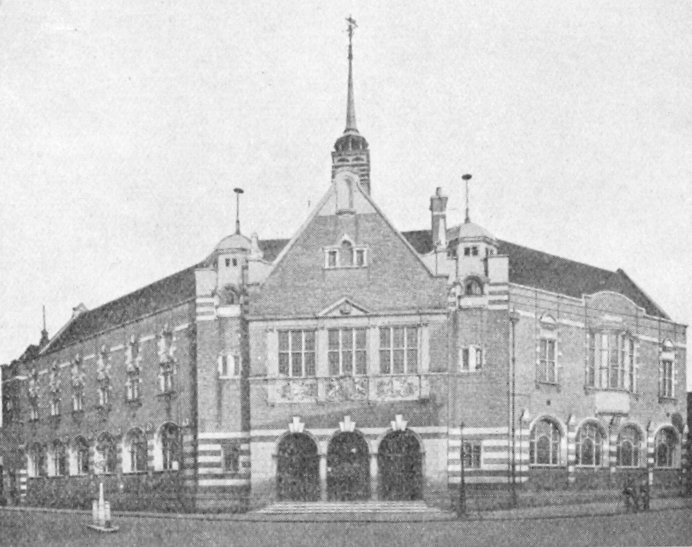
Central Libraries. |
|
The commodious Central
Libraries, built to commemorate the Diamond
Jubilee of Queen Victoria, occupy the site
of the old Theatre Royal, Cleveland Road and
Garrick Street, and were, opened to the
public in 1902. They contain reference and
lending libraries, a newspaper room,
a commercial reference library and reading
room, children's library and reading room
and teachers' section. The approximate
annual attendance in the reading room is
800,000.
The lending department,
which contains upwards of 36,000 volumes, is
open daily from 9am. to 8pm. except on
Fridays, when the library is closed. During
the summer months, the lending department
closes at 7pm. on Mondays and Thursdays. The
general reference library is open daily from
9am. to 9.30pm. and the magazine room and
newspaper room from 9am. to 9.30pm.
There are three branch
reading rooms, one in Horseley Fields, one
in Evans Street, Whitmore Reans, and one in
Springfields.
The borough chief
librarian is Mr. William T. Beeston, F.L.A. |
|

Technical College. |
|
General and Technical
Education.
Wolverhampton possesses
excellent and up-to-date educational
facilities. The Grammar School, founded and
endowed in 1515 occupies a high position
among the public schools of the country. In
addition to a large number of well-equipped
council elementary schools, there is a secondary
school, a Girls' High School,
evening continuation schools, and other
branches of educational work.
An important adjunct to the educational
institution is a new Technical College,
erected in conjunction with, the county
authorities. The new building replaces an
old school of limited dimensions and
capabilities. The engineering block of the
new college was opened in May, 1926, by
H.R.H. Princess Mary Viscountess Lascelles. |
|
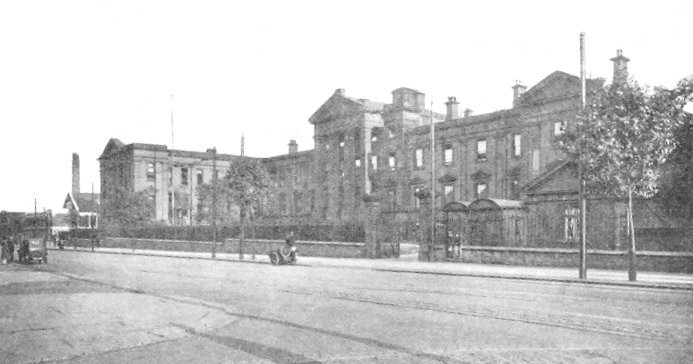
The Royal Hospital,
Cleveland Road. |
|
Healthy Wolverhampton
Many towns lie in a
hollow, and have hills on one or more sides,
the greater part of Wolverhampton on the
other hand, has been built on an eminence.
Breezes from any direction except an
easterly or south-easterly one bring with
them the pure atmosphere from the
agricultural areas on the western side.
Wolverhampton, therefore, and particularly
the western and residential portion of it,
suffers very little from the atmospheric
pollution usually associated with industrial
areas.
It would be manifestly
unfair to consider the death and sickness
rates of a town like this in conjunction
with those of a seaside resort, but when a
comparison is made with other industrial
towns of about the same size the results are
quite favourable to Wolverhampton. A similar
comparison with the other industrial towns
of Staffordshire over a ten-year period,
gives an even better result, Wolverhampton
having the second lowest death rate and
infant mortality rate.
Although the high
position of Wolverhampton has presented
certain engineering difficulties in regard
to the water supply and drainage, these have
been successfully overcome, and it can
confidently be stated that the sanitation,
the scavenging and refuse disposal system of
the town are most up-to-date and efficient.
The hospital provision,
both voluntary and municipal is
exceptionally good, and institutional
treatment is available for any kind of
disease or accident. The town council are
making extraordinary efforts to improve the
housing and environment of their citizens,
and the newly-developed areas of the town
are undoubtedly assisting in the growth of
healthier and happier families.
Wolverhampton is making
very rapid progress in the care of mothers
and young children and the corporation's
extensive scheme for maternity and child
welfare is bearing fruit in the improved
health of the rising generation. |
|
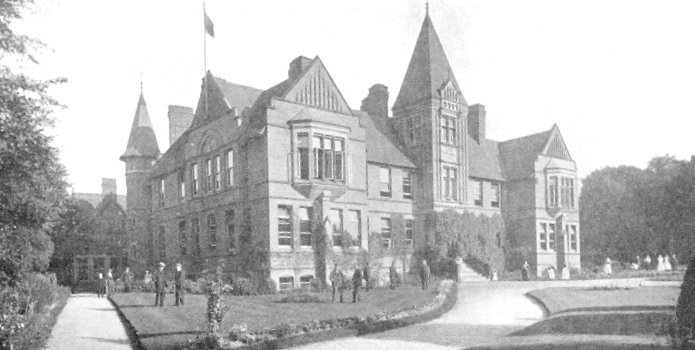
Wolverhampton &
Midland Counties Eye Infirmary. |
|

District Nursing
Association Maternity Home. |
|
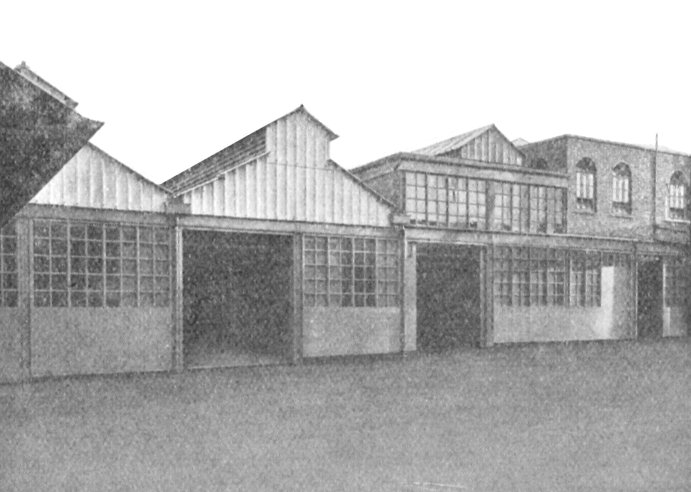
The abattoirs. |
|
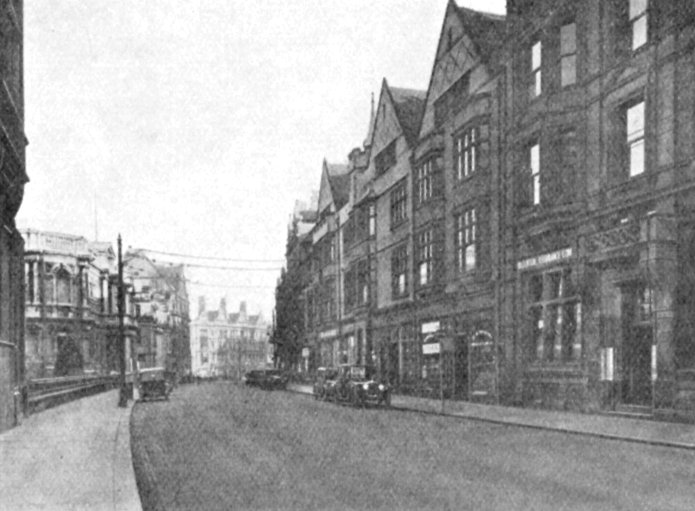
Lichfield Street. |
 |
|
 |
|
Return to
the beginning |
|
Proceed to
Local Industries |
|